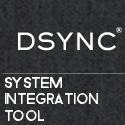WordPress is the most popular Content Management System (CMS) on the World Wide Web.
I’m one of the two web developers for Liberbyte.com, a tech blog with a focus on end user education and open source. I’ve done enough raw coding with HTML, CSS and JavaScript in the past 15 years to really appreciate how WordPress makes maintaining our blog easier. Once the look and design of the UI is in place, adding new posts is even quicker within WordPress than it would be using a web development suite such as Aptana. Better yet, all of my work can be done inside my web browser, which uses a lot less memory than an IDE. Like many popular applications, WordPress even has many thousands of plug-ins and widgets created by WordPress’ vast developer community. Because WordPress is open source and licensed under GPL, each release gets better and better, and thousands of developers are making useful programs for it. Although WordPress was really designed for blogs, with the multitude of plug-ins that can be installed, and the flexibility to customize many elements, the CMS can be adapted for many other formats of websites.
Developed with PHP, and powered by mySQL databases, WordPress is used by an astonishing 8.5% of all websites. Web delivered malware and website cracking are becoming increasingly common. With such a large percentage of web content using WordPress as a CMS, any security vulnerabilities in WordPress’ coding or framework could affect millions of websites.
In this article, I’ll explain how you can best protect your WordPress developed website from malware and cracking.
|
|
|


Leave a Reply